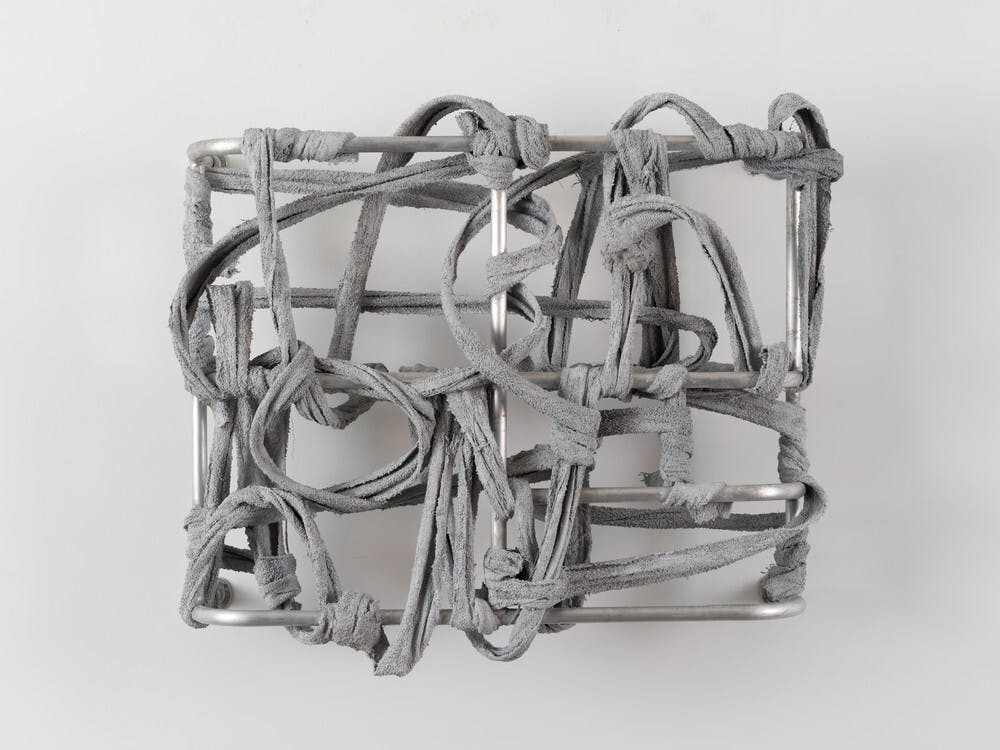Nikita Gale
(1983)Using various technologies often associated with construction or stagecraft, Nikita Gale interrogates the structures of labor, attention, and restriction.
Biography
Born into a military family, Gale was raised between Anchorage, Alaska, and Atlanta, Georgia. Gale’s mother worked as a music teacher and Gale’s father as an Air Force architect. The artist’s mother’s instruments, father’s foam-board architectural models, and uncle’s drawings on cardboard, which he often gifted to Gale and other young relatives, are among Gale’s earliest memories of the arts.
The focus of Gale’s undergraduate studies was in anthropology and archaeology; however, a semester spent studying under art historians Kellie Jones and Hazel V. Carby encouraged Gale to pursue art as a career. The artist, after several years working in advertising, went on to participate as a featured artist in the Center for Photography at Woodstock’s artist in residency program and later pursued an MFA.
Gale’s parents’ careers within public space and performance directly reflect the artist’s own conceptual ideas and material choices. The artist’s installations feature aluminum trusses, stage lighting, instruments, and other objects commonly found at concerts. Gale explores the political nature of these objects, highlighting metal barricades, microphone stands, and concrete as having a shared history of performance and protest. The artist records the gestures of performance without including the performer in the final works, focusing instead on the mechanisms and structures that comprise the performance itself.
Gale received a BA in anthropology from Yale University (2006) and an MFA in new genres from the University of California, Los Angeles (2016). The artist has had solo shows at the Tate Modern (2023), California African American Museum (CAAM) (2021), and the University of Texas at Austin (2019), along with group shows at the Studio Museum in Harlem (2017), the Hammer Museum (2018), and the Anchorage Museum (2021). Gale was also a featured artist in the 2024 Whitney Museum Biennial, Even Better Than the Real Thing, and received the Whitney Museum’s Bucksbaum Award that same year. The Studio Museum in Harlem acquired Gale’s work in 2022.
Nikita Gale
(1983)Using various technologies often associated with construction or stagecraft, Nikita Gale interrogates the structures of labor, attention, and restriction.
RUINER XIX, 2022
Biography
Born into a military family, Gale was raised between Anchorage, Alaska, and Atlanta, Georgia. Gale’s mother worked as a music teacher and Gale’s father as an Air Force architect. The artist’s mother’s instruments, father’s foam-board architectural models, and uncle’s drawings on cardboard, which he often gifted to Gale and other young relatives, are among Gale’s earliest memories of the arts.
The focus of Gale’s undergraduate studies was in anthropology and archaeology; however, a semester spent studying under art historians Kellie Jones and Hazel V. Carby encouraged Gale to pursue art as a career. The artist, after several years working in advertising, went on to participate as a featured artist in the Center for Photography at Woodstock’s artist in residency program and later pursued an MFA.
Gale’s parents’ careers within public space and performance directly reflect the artist’s own conceptual ideas and material choices. The artist’s installations feature aluminum trusses, stage lighting, instruments, and other objects commonly found at concerts. Gale explores the political nature of these objects, highlighting metal barricades, microphone stands, and concrete as having a shared history of performance and protest. The artist records the gestures of performance without including the performer in the final works, focusing instead on the mechanisms and structures that comprise the performance itself.
Gale received a BA in anthropology from Yale University (2006) and an MFA in new genres from the University of California, Los Angeles (2016). The artist has had solo shows at the Tate Modern (2023), California African American Museum (CAAM) (2021), and the University of Texas at Austin (2019), along with group shows at the Studio Museum in Harlem (2017), the Hammer Museum (2018), and the Anchorage Museum (2021). Gale was also a featured artist in the 2024 Whitney Museum Biennial, Even Better Than the Real Thing, and received the Whitney Museum’s Bucksbaum Award that same year. The Studio Museum in Harlem acquired Gale’s work in 2022.
